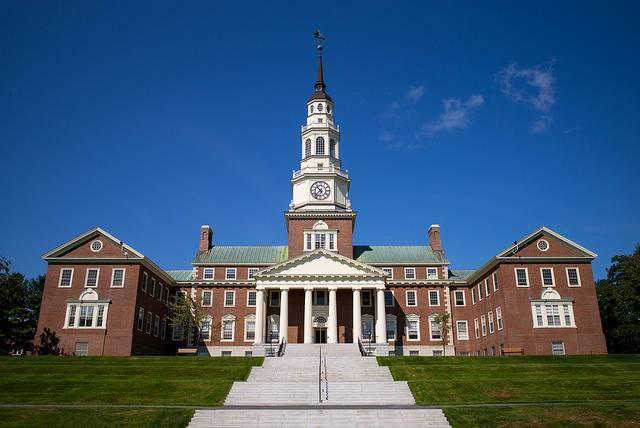
By Bob Best, Head of Energy and Sustainability, JLL
Carbon neutrality is about to go primetime in college campuses across the country. Already, a handful of smaller-sized colleges like Colby College, Middlebury College, and Green Mountain College have become carbon-neutral, while many more have goals to reach neutrality in the near future, including large institutions like the University of California system, which plans to reach carbon neutrality by 2025.
Aspiring for net zero carbon emissions is a natural extension of higher education’s growing thirst for sustainability. And according to JLL’s new report, it’s a goal that’s becoming more achievable. It’s also more appealing to the diverse set of stakeholders comprising any campus community, from students and their parents to faculty, administrators, alumni, donors and the board of trustees.
Many of those constituents can appreciate carbon neutrality programs for their pragmatic benefits, such as cutting energy costs and earning rebates and incentives, or anticipating potential city and state energy and carbon mandates in the future.
There’s also the positive feeling associated with participating in a campus community that walks the talk of social and environmental responsibility. The power of such perception is not insignificant: According to Princeton Review’s Guide to Green Colleges, 61 percent of prospective college students say that having information about a school’s environmental programs would influence their application or enrollment decisions.
So, what can you do to rally on your institution’s neutrality goals?
Seven considerations on the road to carbon neutrality
Universities have traditionally been at the leading edge of sustainability initiatives. With the following in mind, they can stay ahead of the carbon-neutral trend, too.
- Keep it interdisciplinary from the get-go—and beyond. Academia wouldn’t be academia without dialogue, so open the doors for inclusive discussion at the earliest planning stages. I suggest creating sub-committees of potential stakeholders, including students, faculty, admin, and operational staff alike. Engage them in discussing both the benefits and challenges of going carbon-neutral, in terms of environmental and economic impact, as well as personal comfort and convenience. Nurture their participation throughout planning and implementation, which will also help foster widespread adoption in your efforts.
- See how you measure up. If you haven’t done so recently, then I recommend getting a campus-wide assessment of energy usage to identify opportunities for saving. Also consider an occupancy analysis to learn when space is underused, so that you can reduce or even turn off heating and cooling systems. You might turn up space that is entirely unneeded, and could even reveal space that is so underused, its occupants could be redistributed.Benchmarking sustainability practices amongst your peers can also help you not only understand where you are, encourage stakeholders to make bigger investments. Track the metrics that make most sense for your facilities, such as energy efficiency savings or percentage of renewable energy use.
- Don’t let the small picture interfere with big goals. Putting too much emphasis on fast payback can cost you in the long run. While there can be merit in quick wins like a straightforward lighting retrofit, it’s very possible that more meaningful long-term results are possible with a project with more up-front costs. Focus on long-term value, not short-term points. When possible and appropriate, organize pilot programs of significant projects, so that you can better demonstrate long-term benefits of a major infrastructure update, for example.
- Invest in smart buildings and renewables. There are many ways to tap ever-advancing smart technology. For example, wireless sensors can remotely monitor and control building equipment to make HVAC truly on-demand. Commissioning, while the most effective way to reduce energy, is expensive. Smart buildings can facilitate ongoing commissioning which can not only prevent equipment failure before it happens, but also keep track of the number of equipment failures, in turn notifying the capital planning process which equipment may need replacing. Using renewable energy generation is the shortest path to carbon neutrality.
Meanwhile the costs of renewable energy are falling, and are now on par with conventional energy sources in many areas. Onsite generation may be a longer-term goal, but there are other ways to “go renewable” with little to no up-front cost, like finding a third party renewable provider or negotiating a renewable power purchase agreement. Combined with energy storage or microgrid, the renewables may ensure campus resiliency. For example when much of Manhattan south of Midtown was blacked out during the Hurricane Sandy, the lights were on at most of New York University, as was the heat and hot water.
- Bring carbon-neutrality to long-term capital planning. Aging buildings are a fixture at many institutions, with a glut of 1960-1975-era buildings in need of update. This can actually be an advantage to carbon neutrality programs, if you ensure its place in capital planning. One study by Sightlines and the University of New Hampshire found that shifting capital investments to building exteriors, mechanical systems, and utility makes the most progress toward reducing energy usage and greenhouse gas emissions.
- Look for and leverage grants and incentives. Every city and state has its own potential perks—and they’re worthy of investigation. For example, the University of California is using a $2.5 million grant from the U.S. Department of Energy to build a net-zero-energy community at its Davis campus.
- Amplify the goals; celebrate the successes. Share your goal-oriented policy with the entire campus community. Make sure everyone knows not only that you are going for carbon-neutral, but why you are doing it and how they are helping. Get the credit you deserve for each success, using every communications channel you have to document successes like new certifications or metrics milestones.
Achieving carbon neutrality is becoming less a pipe dream, and more a practical goal. Where is your university on the journey to carbon-neutral?
TriplePundit has published articles from over 1000 contributors. If you'd like to be a guest author, please get in touch!














